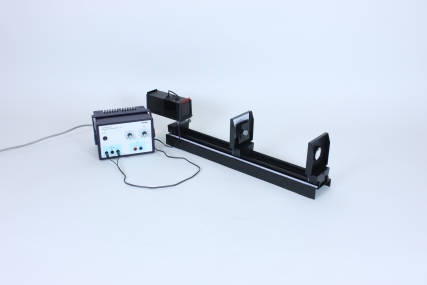Principle
Contrary to diffraction at the edge of an obstacle, experiments on diffraction at a (single) slit enable us to obtain widely varied diffraction patterns which can form impressive images, especially when several slits of varying widths or an adjustable slit are available.
Experiment 1 is recommended as a preliminary investigation. It is quick to set up and to perform, and it has the advantage that the students can directly experience the functional relationship between slit width on the one hand and spacing and intensity of the interference fringes on the other hand. One result of Experiment 1 is a semi-quantitative statement (the more..., the more...) about relationship between slit width b and distance d between the interference minima. This leads them to the final objective in Experiment 2.
In Experiment 2 we have chosen the Fraunhofer arrangement for diffraction at a slit because it is more simple, not least due to the geometrical considerations which help us towards a mathematical understanding of the phenomenon.
Benefits
- Multifunctional light box - All-in-one: Can be used for geometric optics on the table, colour mixing and on an optical bench
- Extension with others sets at anytime, no additional light sources needed, recognition value for students
Tasks
What happens to a beam of light when it passes through a narrow slit?
- Direct a narrow pencil of light onto a slit of variable width, and observe the slit images which are created when the slit width is gradually reduced.
- Find out what correlation exists between the slit width b and the distance d between the interference minima created.

